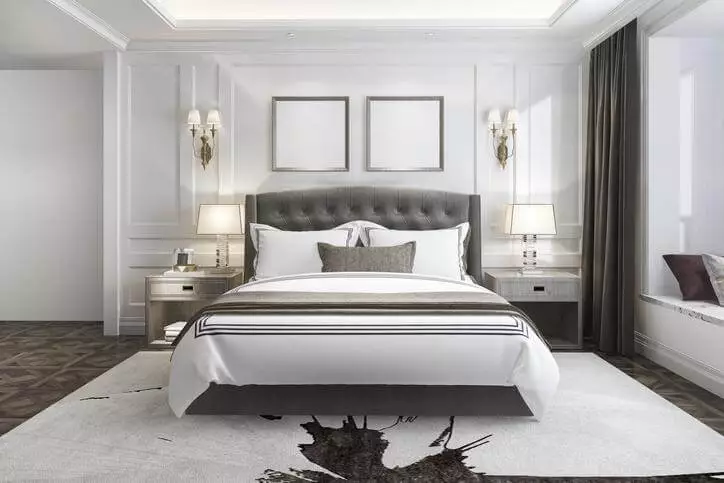The bedroom, as a haven of peace and relaxation, must be designed to encourage rest. It is vital to consider the furnishings in an ergonomic manner in order to produce a relaxing environment.
It’s critical to choose the proper furniture for your bedroom and put it in the right place to maximize space, especially if you have a small room.

Here are some helpful hints and ideas for furnishing your bedroom.
Simplicity and minimalism should be prioritized.
The tone is set in the bedroom by the dcor. The color scheme for the walls, flooring, and furnishings has a significant impact on the room’s ambience.
Choose a light color, such as white, beige, or very light pink, rather than a bright or dark color, to assist you go asleep. Stay with the chosen colour or go monochrome with everything from the wall coverings to the bed linens and curtains.
By using a palette of colors in this way, you may reduce the number of points of focus and so improve your mind’s relaxation and, as a result, your sleep. In the case of a child’s room, there is a broader range of color options. It’s entirely possible to create a brilliant orange-yellow ambiance.
Parsimony is required when it comes to furnishing.
Indeed, the more a room is crammed, the more oppressive it appears and produces suffocating. By removing the unnecessary, you lighten the space and, as a result, your thoughts, creating an environment favorable to restful sleep.
In a room dedicated solely to sleeping, maintain only the essential bedroom items, such as a bed and a bedside table, and keep the furnishings to a bare minimum. These components are more than sufficient, particularly if you have the option of storing your stuff in a separate location. If not, choose a cabinet that is as unobtrusive as possible. To hide its contents and create a smooth surface to the sight, this piece of furniture must be closed with doors or curtains. Remove it from the vicinity of the bed.
Keep the sleeping area clutter-free.
Bookcases filled of books, as well as other ornamental items, knickknacks, and anything else takes up space, look best in a corridor or living room. This rule applies to a room of average size (9 to 12 m2). You can keep these goods in the bedroom if you have extra space. Finally, in the same vein, make sure that any potential sources of concern are kept out of the bedroom. Avoid the temptation to buy a television and try to avoid using screens as much as possible because their blue light disrupts sleep. Make this space a haven where you won’t be disturbed.
It’s just a bed and nothing else.
If just one piece of furniture remained, it would be the bed, which is the focal point of any bedroom.
It’s ideal if it’s the lone piece of furniture in the room. Keep this in mind when selecting it, and treat it with the same care you would if it were the only piece of furniture in the room. Above all, go for the simplest structure possible: a box spring and a mattress, potentially a frame and a headboard, all in the same color scheme as the rest of the room.
The size of the bed is determined by the number of sleepers and the size of the room.
To be able to move around easily in a typical room, adhere to standard bedding (90 x 190 cm for a single bed and 140 x 190 cm for a double bed).
A queen size (160 x 190 cm) or even a king size (180 x 190 cm) bed will fit if you have a large surface space.
In terms of comfort, there’s a lot to choose from and a wide price range: single or double box springs, slatted or upholstered, foam, latex, or spring mattresses in firm or soft versions. Know that proper bedding is one that is tailored to your morphology and build, as well as one that keeps your spine in good shape.
An exception to the “zero furniture” rule is the addition of a night table to the bed. It has space for a bedside lamp, an alarm clock, a glass of water, a book, and other important items for bedtime or waking up. Again, go for simplicity and functionality by selecting a modest piece of furniture that matches the rest of the area for ideal cohesion.

My name is Author Name. I post about home improvement ideas and how to make your home look beautiful and liveable. I hope my posts will help you with your DIY projects!


